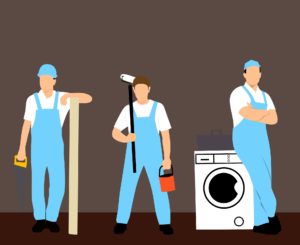Burst sewer lines, natural disasters, and leaking pipes have the potential to damage your home severely. When you notice any cause of the destruction, you should act quickly and accordingly to prevent further damage. As you wait for professionals to make final repairs and assessments, there are some DIY water clean up tips you can use to minimize the damage.
What Are the Affected Areas?
 As much as water is essential for life, it still has the potential to destroy things and leave a big mess. As a home occupant or owner, it is necessary to identify areas that are likely affected. For safety, begin by investigating the walls, plaster, insulation, wood, electrical wiring, HVAC, pipes, floor covering, and appliances.
As much as water is essential for life, it still has the potential to destroy things and leave a big mess. As a home occupant or owner, it is necessary to identify areas that are likely affected. For safety, begin by investigating the walls, plaster, insulation, wood, electrical wiring, HVAC, pipes, floor covering, and appliances.
If the water leakage or flow is moderate, you can handle the task by yourself. Nonetheless, if the leakage causes flooding, it is best to hire a professional. Here are some tips you can follow to help control the damage before calling experts to finalize.
i. Disconnect Outlets
The foremost thing to do once you identify water damage is disconnecting all electrical appliances instantly. The last thing you want to happen is one of your house members getting electrocuted. Regardless of the level of severity, you should always unplug all electronics and gas lines. Avoid using these appliances until you dry the water out completely.
ii. Dry Water Out
By eliminating all the moisture and water, you prevent further damage from occurring. You can take out things like the carpet to dry out in the sun while other materials and areas can be dried out using fans. However, this will not prevent the formation of molds hence why you have to do a detailed investigation.
iii. Inspect Mold

Particular mold strains are highly toxic and can lead to severe health complications. When checking for areas affected by water damage, make sure to look for any signs of molds. If you find that you have a severe mold problem, the right thing to do is call a specialist.
iv. Remove Damaged Material
If your permeable materials are soaked, you have to dispose of them quickly to avoid mildew. Inspect the walls, floors, and ceiling first and get professionals to help with the repair in case of damage.
Remember that while handling water leakage and damage, there are different types of water. Some water may contain bacteria and hazardous substances, hence why you should always be cautious and have the right gear for the task.
